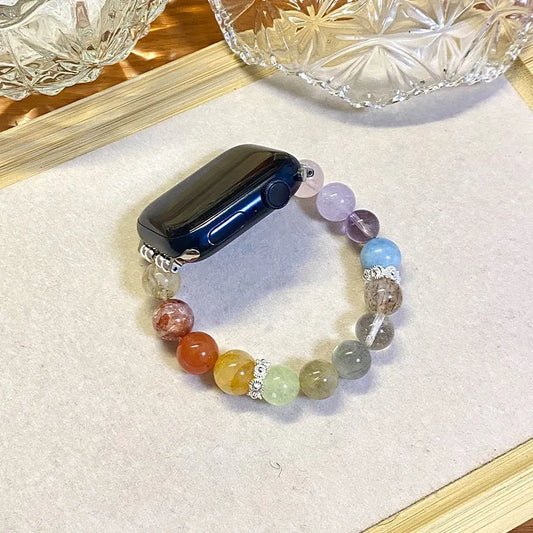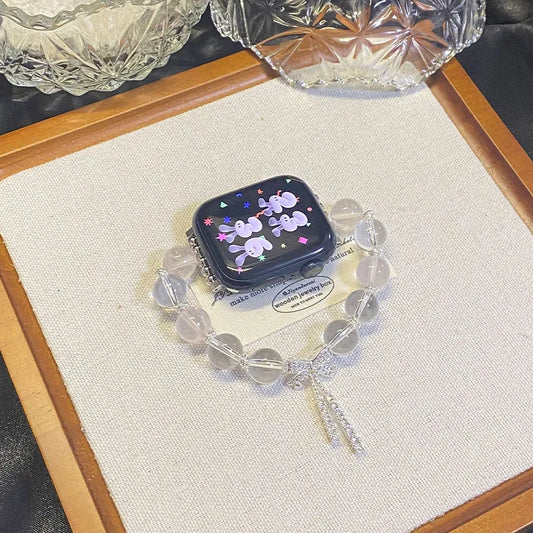If you’re like me, you probably love switching up your Apple Watch bands to match your outfit, mood, or even the occasion. One day it's a sleek leather band for a formal meeting, and the next, it’s a sporty silicone band for a run.
But with all this swapping, you might start wondering, “Am I damaging my watch? Is it OK to change Apple Watch bands this often?”

The good news is, you’re not alone in asking this question. Let’s dive into what happens when you frequently change bands and whether it’s something you should be concerned about.
Why Change Your Apple Watch Band Frequently?
1. Versatility in Style

Frequent band changes allow you to match your Apple Watch with various outfits and occasions. Whether you’re heading to a business meeting, a casual outing, or a workout session, there’s a band to fit every scenario.
2. Comfort
Different activities may require different levels of comfort from your watch band. For example, a silicone band might be more comfortable during a workout, while a leather band may be preferable for daily wear. Changing bands allows you to choose the most comfortable option for your current activity.
3. Seasonal Adaptation

Certain materials and styles may be more suitable for different seasons. For instance, a breathable nylon band might be better for hot summer months, while a metal or leather band could be more appropriate for cooler weather.
4. Functionality

Some bands offer additional functionality that can be beneficial in specific situations. For example, a sport band with a secure fit is ideal for intense physical activities, while a magnetic Milanese loop can be easily adjusted for perfect fit and comfort throughout the day.
5. Hygiene
Regularly changing and cleaning your Apple Watch bands is crucial, especially if you wear them during workouts. Bands can accumulate sweat, dirt, and bacteria, so swapping them out can help keep your watch and skin clean and healthy.
6. Personal Expression

Your watch band can be a way to express your mood or personality. With the wide variety of colors, patterns, and materials available, you can showcase your individuality and make your watch a unique accessory that reflects your personal style.
7. Improving Performance
Different bands can affect how the Apple Watch sits on your wrist, which can impact sensor performance. Ensuring a proper fit with the right band can improve the accuracy of health and fitness tracking.
8. Reducing Allergic Reactions
Some users may develop allergic reactions to certain materials over time. Switching to hypoallergenic bands can help prevent skin irritation and provide a more comfortable wearing experience.
How to Change Apple Watch Bands Safely

Changing your Apple Watch band is a straightforward process:
- Turn your Apple Watch over so the back is facing you.
- Press the release buttons where the band meets the watch.
- Slide the old band out to remove it.
- Select your new band and slide it into place until you hear a click, indicating it is securely attached.
- Check the attachment by gently pulling on the band to ensure it’s properly in place.
For more information, see Changing Your Apple Watch Band Has Never Been Easier
Tips for Choosing the Right Apple Watch Band

Selecting the perfect Apple Watch band can enhance both the functionality and aesthetic appeal of your watch. Here are some detailed tips to help you choose the right band:
1. Material:
The material of the band is crucial for comfort, durability, and suitability for different activities. Here's a comparison of the common materials:
|
Material |
Pros |
Cons |
Best For |
|
Leather |
Classic and elegant look, comfortable, molds to your wrist over time |
Requires regular maintenance, can be less durable with heavy use, not ideal for water activities |
Formal occasions, everyday wear |
|
Metal |
Durable, sophisticated, hypoallergenic options available |
Can be heavy, might pinch skin or pull hair, less breathable |
Business settings, formal events |
|
Silicone |
Lightweight, water-resistant, durable, easy to clean |
Less formal appearance, can cause sweating |
Sports, workouts, casual wear |
|
Nylon |
Breathable, lightweight, quick-drying, comfortable |
Less formal, may wear out faster |
Summer wear, casual settings, sports activities |
2. Size:

Choosing the correct size ensures comfort and proper fit. Apple Watch bands come in two primary sizes:
| Apple Watch Size | Compatible Series |
|---|---|
| 38mm / 40mm / 41mm / 42mm | Series 1, 2, 3, 4, 5, 6, SE, 7, 8, 9, 10 |
| 42mm / 44mm / 45mm / 46mm | Series 1, 2, 3, 4, 5, 6, SE, 7, 8, 9, 10 |
| 49mm | Apple Watch Ultra 1, 2 |
Make sure to select the band size that matches your Apple Watch case size to ensure a proper fit and seamless integration.
3. Style:

The style of the band should complement your personal taste and wardrobe. Consider the following when choosing a style:
- Color: Opt for colors that match or complement your regular outfits. Neutral colors like black, brown, or white are versatile, while bold colors can make a statement.
- Design: Choose a design that reflects your personality. Classic designs are timeless and elegant, while modern or sporty designs can add a contemporary touch.
- Occasion: Match the band style to the occasion. A sleek leather or metal band is perfect for formal events, while a vibrant silicone or nylon band suits casual and sporty settings.
By considering these factors, you can select an Apple Watch band that not only fits your watch perfectly but also enhances your comfort and style for any occasion.
Caring for Your Apple Watch Bands
To maintain your Apple Watch bands:
- Clean them regularly: Use appropriate cleaners based on the material—mild soapy water for silicone and metal bands, and leather cleaner for leather bands.
- Store them properly: Keep them in a cool, dry place when not in use.
- Rotate bands: Switch between different bands to reduce wear and prolong their lifespan.
- Inspect for damage: Regularly check for signs of wear and replace bands if necessary.
For more information, see How to Clean and Maintain Your Apple Watch Bands
Conclusion
In conclusion, it is perfectly fine to change your Apple Watch bands often. Doing so enhances your watch's versatility, extends the lifespan of your bands, and maintains hygiene. Whether you’re updating your style or preparing for a specific activity, swapping bands is a quick and easy way to ensure your Apple Watch always fits your needs.
So, go ahead and enjoy the freedom to customize your Apple Watch as often as you like.








